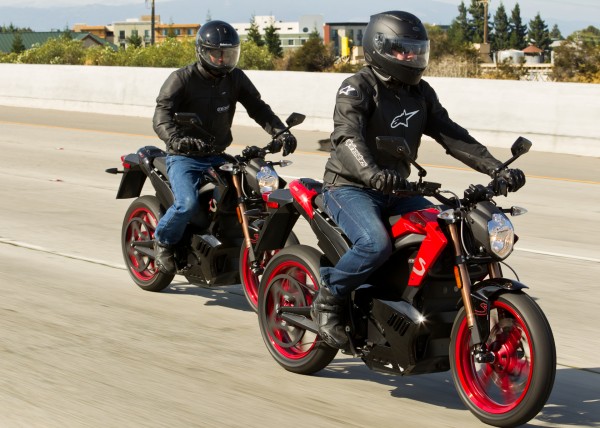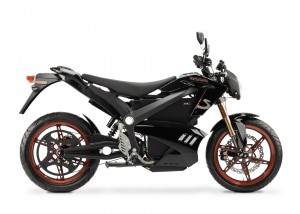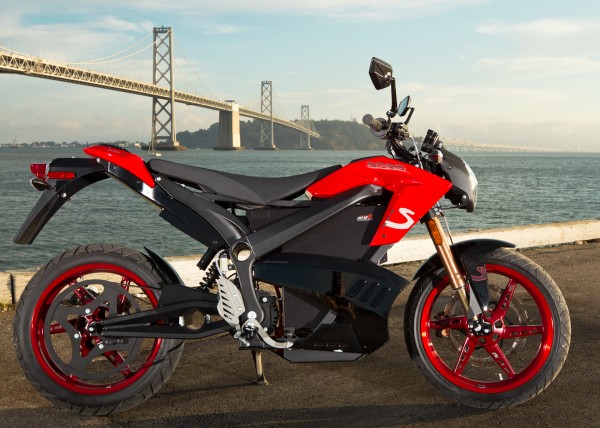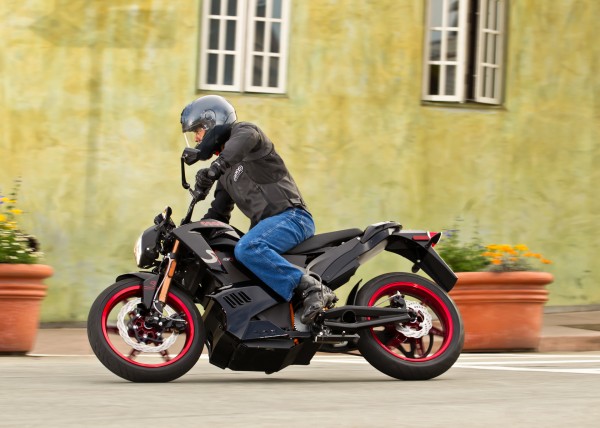By Bud Wilkinson of RIDE-CT.com
It wasn’t until after a recent phone conversation with Mike Cunningham ended that the most obvious question popped to mind. Cunningham is Director of U.S. Sales and Dealer  Development for Zero Motorcycles and the question – OK, two related questions – that I’d failed to ask him? “Where did the Zero name come from and what does it mean?”
Development for Zero Motorcycles and the question – OK, two related questions – that I’d failed to ask him? “Where did the Zero name come from and what does it mean?”
Does Zero refer to zero emissions? Does Zero refer to zero noise? Or does Zero refer to nearly zero maintenance? Examine a Zero motorcycle and what you don’t see are exhaust pipes. Ride a Zero and what you don’t hear is engine noise. Own a Zero motorcycle and what you won’t have to do regularly is fill a gas tank and change the oil.
If you haven’t figured it out yet, California-based Zero Motorcycles makes battery-powered electric motorcycles. The company was founded in 2006 by former NASA engineer Neal Saiki in his garage and has since grown into a full-blown manufacturer that puts out five models – two for street, two for dirt, and one for both.
 Zero currently has a lineup of 34 dealers in the U.S. – the closest being Carbon Negative in New York City and Great Bay Motorsports in North Hampton, N.H. However, Cunningham was in Connecticut one evening last month showing off product at New England Cycle Center in Hartford in hopes of landing a dealer in the state. RIDE-CT got a last-minute invite to take a test ride after being tipped about Zero’s visit but couldn’t do it
Zero currently has a lineup of 34 dealers in the U.S. – the closest being Carbon Negative in New York City and Great Bay Motorsports in North Hampton, N.H. However, Cunningham was in Connecticut one evening last month showing off product at New England Cycle Center in Hartford in hopes of landing a dealer in the state. RIDE-CT got a last-minute invite to take a test ride after being tipped about Zero’s visit but couldn’t do it  on short notice.
on short notice.
New England Cycle Center’s sales manager, Steve Marquardt, did get “a nice test ride” and “found the Zero motorcycle very interesting. The thing that you notice first is the lack of sound. For an experienced motorcycle rider, the lack of sound is interesting.” Marquardt added, “I’d like to see it a little more finished looking.”
The fact that the Zero may not be as polished or potent as gas models made by others isn’t surprising. Development of electric motorcycles is still the early stages. Zero’s interest in landing a dealer in Connecticut got me wondering, though, about the acceptance of electric motorcycles and the potential for future growth of the segment, so I reached Cunningham later in his home base of Las Vegas.
Prior to joining Zero, Cunningham was vice president of dealer development for Triumph in the U.S. between 2007 and July 2011, before that worked for Vespa and even once owned a motorcycle dealership, so he knows something about bikes.
 Perhaps his biggest challenge is raising consumer awareness of electric motorcycles and, specifically, the Zero brand. (Another company, Brammo, based in Oregon, is also ramping up production of electric street bikes and slowly building a dealer network, too.) “Absolutely,” he said. “We’re the only one with any kind of a dealer network and production. We’re small company. We’re not a Harley or a Honda or even a Triumph.”
Perhaps his biggest challenge is raising consumer awareness of electric motorcycles and, specifically, the Zero brand. (Another company, Brammo, based in Oregon, is also ramping up production of electric street bikes and slowly building a dealer network, too.) “Absolutely,” he said. “We’re the only one with any kind of a dealer network and production. We’re small company. We’re not a Harley or a Honda or even a Triumph.”
Cunningham said riders are often “amazed” when they see a Zero in person. “When they think of electric, they think of motor scooters, not motorcycles. It is a full-sized motorcycle. It’s definitely not a toy,” he said. The reaction after taking a demo ride is often the same as Marquardt’s. The lack of engine noise is noticeable. “You can hear things that you could never hear even on your stock-exhaust bike. It opens up your senses. It’s amazing to be able to go down the road at 50 with another EV bike and carry on a conversation,” Cunningham said.
 Performance is different as well, with most of the power coming not on takeoff but when rolling on the throttle when up to speed. “It’s a different experience than a gas powered vehicle. It’s something that you have to ride. It’s such a different feeling,” he said.
Performance is different as well, with most of the power coming not on takeoff but when rolling on the throttle when up to speed. “It’s a different experience than a gas powered vehicle. It’s something that you have to ride. It’s such a different feeling,” he said.
Unlike with gas machines, which get their best gas mileage on the highway, electric motorcycles “get better efficiency in the city. Starting and stopping is a good thing for us. Varying speeds is a good thing. Our street bikes have regenerative braking. As you brake, the vehicle, instead of expending energy, generates energy back into the battery,” Cunningham explained.
What is rising for the electric manufacturers is range. Zero claims that its S model with a 9.0 kWh power pack has a range of 114 miles before its needs to be charged. The MSRP is $13,995 but the company says it costs less than a penny a mile to run. The S gets the equivalent of 487 mpg. Other savings can be found in the lack of required maintenance. Aside from replacing tires and brake pads, there’s little to do. “A battery should last 308,000 miles,” said Cunningham, adding that two bearings in the motorcycle need to be changed at 160,000 miles and the belt every 100,000 miles.
While electric motorcycles are pricey, Cunningham said, “As the volume goes up and the cost comes down for components, I think you’ll see the cost coming down somewhat.” Range may slowly increase, too, as will top speed. Top speed of the Zero S is 88 miles per hour.
Current Zero buyers are highly-educated, higher income, “early adopters,” said Cunningham. “They are motorcyclists. They probably already own one of two bikes. This is an addition to their stable. The initials sales were probably to males, probably 50ish. That’s starting to slide, come down in age.”
An electric motorcycle may not be for everyone, but Cunningham says he tells prospective dealers that “there’s no doubt that electric is coming. You can’t pooh-pooh it. You have to go ride one.” New England Cycle Center hasn’t made a decision to become a Zero dealer. “We found it interesting and realize the market is changing,” said Marquardt.
If the lack of an exhaust growl is too disconcerting, well, there is a solution. Remember when we were kids and wanted to make our bicycles sound mean? Simple solution. Baseball cards in the wheels.
(Originally published in “The Republican-American” on June 9, 2012.)
 Ride CT & Ride New England Serving New England, NYC and The Hudson Valley!
Ride CT & Ride New England Serving New England, NYC and The Hudson Valley!

